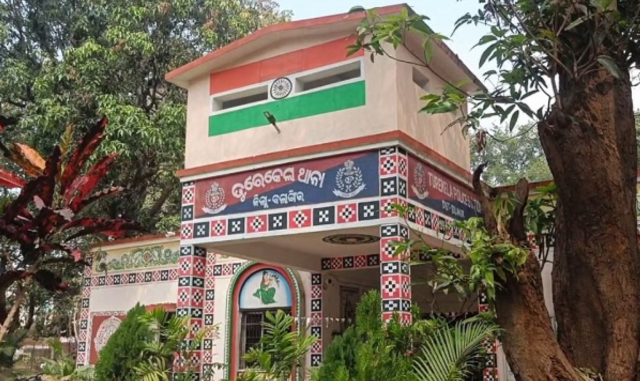On August 12, the world comes together to celebrate World Elephant Day, a global initiative launched in 2012 by Canadian filmmaker Patricia Sims and the Elephant Reintroduction Foundation in Thailand.
This day is dedicated to raising awareness about the conservation of elephants, with a special focus on Odisha, India, where the ‘Asian Elephant’ (Elephas maximus), India’s National Heritage Animal, holds both ecological and cultural significance. As an ‘Endangered’ species on the IUCN Red List, protected under Schedule I of the Wildlife Protection Act, 1972, and listed in Appendix I of CITES, the Asian Elephant faces critical conservation challenges. In Odisha, these gentle giants are not only vital to the ecosystem but also deeply woven into the state’s spiritual and cultural fabric.
The Biology of Odisha’s Elephants
Asian Elephants are remarkable creatures, known for their intelligence, complex social structures, and adaptability. With a lifespan of 60–80 years, adult males weigh 4–5 tonnes and reach up to 9 feet at the shoulder, while females weigh around 3 tonnes and stand up to 8 feet. Living in **matriarchal herds** led by the oldest female, elephants form clans where females collectively care for calves, ensuring their survival. Males, upon reaching puberty, leave their natal groups to lead solitary lives or form temporary associations, joining females during mating season to maintain genetic diversity.
Elephants are **herbivores**, consuming approximately 150 kilograms of vegetation daily, including grasses, woody plants, and tree bark. They spend nearly two-thirds of their day foraging and require 100–200 litres of water daily for hydration and thermoregulation, as they lack sweat glands. Their daily movements span 10–40 kilometres in search of food, and they can reach speeds of 25–40 km/h when needed. Elephants rest during the hottest parts of the day, often sleeping standing up, though younger ones prefer lying down. Their communication is equally fascinating, with trumpet calls audible up to 5–6 kilometres and vibrations from foot stomping conveying messages. Known for their emotional depth, elephants express joy, compassion, and grief, and their highly developed brains make them among the most intelligent animals on Earth.
Reproductively, elephants in areas with abundant food have an intercalving interval of 4–5 years. Males reach sexual maturity at 10–12 years but typically mate around 25 years when dominant. During **musth**, a heightened reproductive state, males become aggressive, while females may synchronise oestrus for successful mating. These biological traits highlight the need for vast, undisturbed habitats to support their survival.
Distribution in Odisha
Odisha is a critical habitat for Asian Elephants, with an estimated population of **2,098** as per the 2024 All Odisha Elephant Census, a slight increase from previous years. These elephants roam across forested regions, including **Similipal Tiger Reserve**, **Satkosia Tiger Reserve**, **Chandaka-Dampara Wildlife Sanctuary**, and **Debrigarh Wildlife Sanctuary**, as well as forest divisions In districts like Dhenkanal, Angul, Mayurbhanj, Keonjhar, Sundargarh, and Cuttack. Seasonal migrations through elephant corridors connect these habitats, allowing access to food and water. However, habitat fragmentation, human-elephant conflict, and poaching pose significant threats. Conservation efforts, including corridor restoration and community awareness programs, are vital to ensuring their survival.
Cultural Ties in Odisha
In Odisha, elephants are more than wildlife—they are revered symbols of wisdom, strength, and good fortune. The phrase **“Abala Brudha Banita”** reflects the universal admiration for elephants across all ages. Their cultural significance is deeply tied to spirituality, particularly in the worship of **Lord Jagannath**. During festivals, Lord Jagannath appears in **Hati Besha** (elephant attire) and **Gaja Uddharana Besha**, symbolising the divine rescue of an elephant in distress. The **Hati Dwara** (Elephant Gate) at the Puri Shree Jagannath Temple and similar features in other temples underscore this connection.
Historically, trained elephants played key roles in temple rituals and processions, notably during the **Rath Yatra**, embodying divine grace and royal grandeur. Odisha’s heritage is adorned with elephant imagery, from the rock-cut sculptures at **Dhauli** to the intricate carvings at **Konark**. These artistic and spiritual representations highlight the elephant’s enduring role in Odisha’s cultural identity.
Conservation Challenges and World Elephant Day
World Elephant Day serves as a reminder of the urgent need to protect elephants from threats like habitat loss, human-wildlife conflict, and illegal poaching. In Odisha, initiatives like habitat restoration, anti-poaching patrols, and community engagement are critical. Programs to mitigate human-elephant conflict, such as early warning systems and compensation for crop damage, are gaining traction. On this day, Odisha’s residents, conservationists, and policymakers unite to celebrate the elephant’s ecological and cultural importance while recommitting to their preservation.
A Call to Action
As we celebrate World Elephant Day, let us honour Odisha’s gentle giants by supporting conservation efforts, respecting their habitats, and preserving the cultural legacy that binds them to the state’s identity. By fostering coexistence and protecting their ecosystems, we ensure that future generations can witness the majesty of these intelligent, emotional, and culturally significant creatures.





























